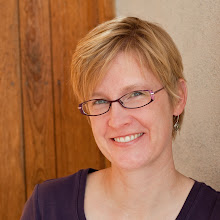Last Wednesday was a red letter day. I got to go to the
Harrisville Designs (HD) spinning mill. I have been looking forward to this ever
since I agreed to teach at HD. I know that makes me a tremendous geek, but I
really loved seeing the MacAusland's wool mill Emily and I visited on Prince Edward Island last summer. It is so fascinating to see how yarn is made
commercially. And this mill is the one that makes the actual yarn I use in my
tapestries. Needless to say I took a ton of photos and video, so here is my
little tour of the mill.
We were given the royal treatment by the woman who manages the mill. I asked her what her name was soon after her talk started and when she said Babs, I had to stop myself from exclaiming in delight. What a perfect name. She has worked for Harrisville
Designs (HD) for 33 years, since she was 29 years old. She was amazing and
clearly knows the process of her mill inside and out. I think it is safe to say
that she pretty much runs the place, though Chick Colony, owner of HD might disagree! He says she quits about once a week, but between the two of them they continue to keep the yarn spinning.
The fleece is dyed in Pennsylvania and sent in 500 pound
bales to HD for the rest of the processing. This means that the Harrisville
yarns are dyed in the fleece and to get the colors they use, they mix the
colors from these bales in a big carding machine. This is literally what “dyed
in the fleece” means.
 |
| 500 pound bales waiting to be mixed with other colors |
Purple and red fleece mix going into the picker. The yarn goes through here twice.
At the back end of the picker, the wool is sprayed with an
oil mixture and then sent up a pipe, shot overhead, and dropped into a bin
where it will then go through the picker again or into the carder in the next room.
The front of the carder.
Middle of the carder. (This is one BIG machine--and this mill has two side by side.)
Then the wool batts get cut by these belts and made into
little round strings of roving.
 |
The horizontal orange and green panels you see below shake back and forth and roll the roving into a round shape.
The whole carding machine from the back end looking toward
the front.
 |
| The rounded roving before it goes to be spun. |
Then the fiber can be spun.
This roving is being made into what Babs called a mock
twist. It is further spun after this. They can do various numbers of the roving
strands to make a thicker or thinner yarn. This machine is doing one strand at a time.
Babs showing us the color card for Watershed that she made.
The final coning is done on these machines. I think that the
yarn is also plyed here, but I am not completely sure. They were not running
this when we were there.
I asked how they skein the yarn as I pay quite a bit more
per skein to get it this way so I can just retie it and put it in the dyebath
and not have to skein it myself. I completely understand why this costs more. The skeiner is a simple concept and they can do 12 at a time. The yarn comes off the cone, runs through some loops and then around what looks like a big warping reel on it's side. Revolutions are counted and at the end the skeins are tied by hand.
This woman was winding tiny little quills of red yarn (see blue arrow at bottom of picture). They do endless numbers of these for the little loom kits they sell. If you wonder why kits are so expensive, I'm here to tell you that it is a tremendous amount of work to divide yarn into little bits to sell as such.
Washed skeins drying. I have also used this trick with the fans to increase speed of drying.
Of course all the yarn has to be labeled, boxed, and shipped in various quantities. Babs also demonstrated the machine they use to twist the skeins before they can be labeled. This is seen in the video.
Someone sits here and puts the labels on the knitting skeins.
And then they are shipped off to many places. This mill does the Harrisville yarn line as well as several others like Jared Flood.
Here is a video of the process.



























Thanks for sharing, Rebecca. I handspin some of my tapestry yarns, but it's always fun to see the process of how our materials are made at the mill. I also use Harrisville for weft - such lovely richly saturated colors.
ReplyDeleteThank you for sharing it was fascinating! I love the video with the yarn gently blowing in fan. Hard not to want to touch it.
ReplyDeleteI loved the tour, Rebecca! Thanks for taking the time to do such a detailed description
ReplyDeleteThis comment has been removed by a blog administrator.
ReplyDeleteThis comment has been removed by a blog administrator.
ReplyDelete